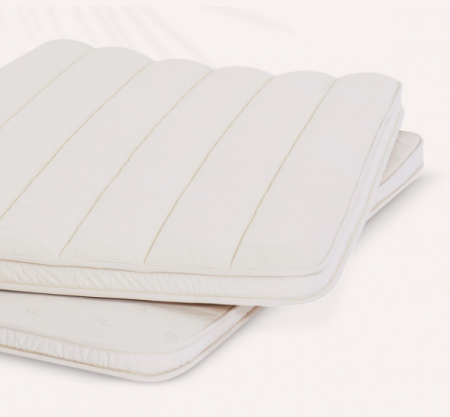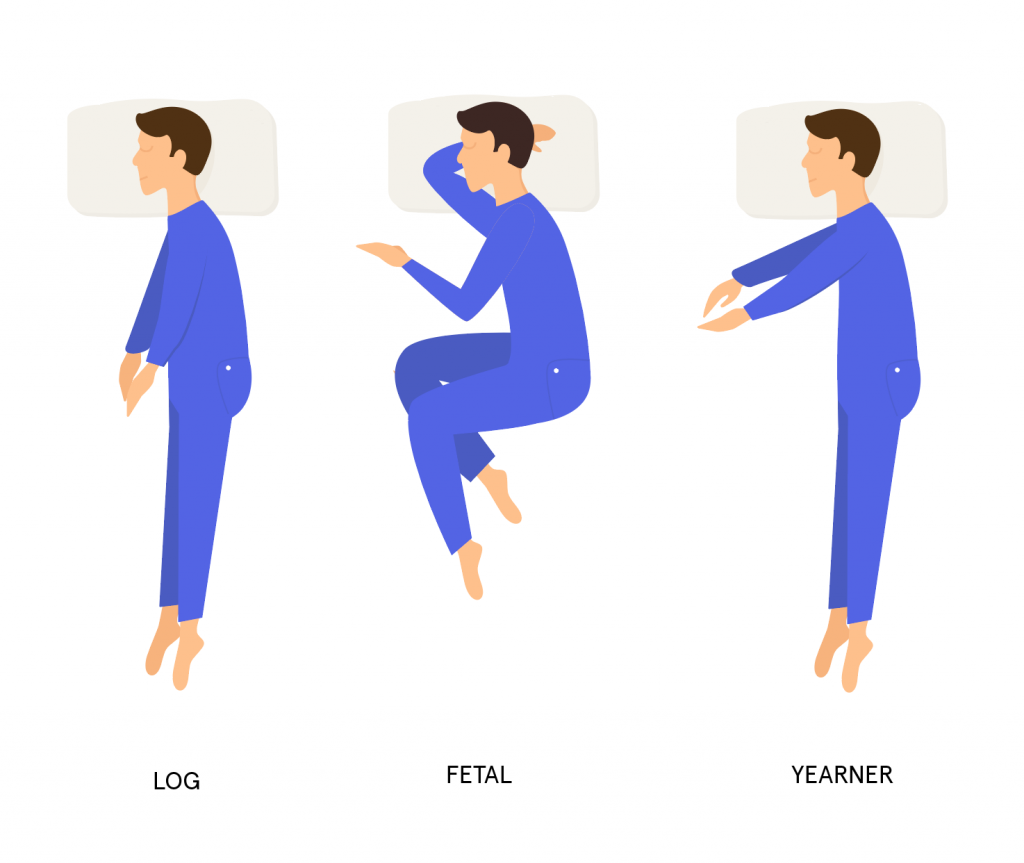Buying Guide – How to Find a Mattress Topper for Side Sleeping
Despite its popularity, side-sleeping can lead to aches and pains for sleepers if the surface does not provide even support to their body. Because the midsection tends to sag more than other areas of the body, many find that extra cushioning beneath the shoulders and hips results in better alignment.
Fortunately, side-sleepers who find their current mattress unsupportive may not need to purchase a new bed. Using a mattress topper can significantly alter the mattress surface to improve spinal alignment, reduce discomfort, and prevent new pressure points from forming. In this guide, we’ll look at what toppers are and how they work, common designs and material options, and some key considerations for first-time buyers.
Benefits and Drawbacks of Side Sleeping
Side-sleeping is the most common sleep position among adults in the U.S. There are several variations on the side-sleeping position, including:
- Fetal: The legs are tucked in at the knees and the back is arched, which resembles a common position for fetuses in the womb. Roughly 40 percent of adults use the fetal position.
- Log: Arms align with the body, legs are extended, and the back is straight, resulting in a uniform line from head to toe. Roughly 12% of adults use the log position.
- Yearner: The arms are extended outward, but the back and legs are straight. Roughly 5 percent of adults use the yearner position.
- Sprinter: The back is straight and arms are aligned with the body. One leg is curled at the knee while the other is extended to resemble running in place. Roughly 2-3 percent of adults use the sprinter position.

Side-sleeping is also considered one of the healthiest positions. Those who sleep on their sides typically experience fewer aches and pains than back- or stomach-sleepers. The position also opens up the airway, making it suitable for heavy snorers and those with chronic conditions such as sleep apnea or acid reflux. Side-sleeping is often the most comfortable option for pregnant women, as well.
There are some disadvantages of side-sleeping, as well. Those who sleep with one side of their face pressed against a pillow are more susceptible to wrinkles. Women may also experience sagging in their breasts. Additionally, there are issues associated with specific positions. The fetal position, for instance, can lead to breathing problems and exacerbate symptoms of arthritis.
Poor spinal alignment can be another drawback. Both the back- and stomach-sleeping positions naturally align the head, spine, and pelvis, which can reduce pain and pressure points in sensitive areas. For side-sleepers, the midsection tends to sag more than other parts of the body, resulting in poor alignment. The hips and shoulders need extra cushioning to level out the sleeper’s body. For this reason, most side sleepers prefer surfaces with a softer feel.
As previously mentioned, a topper can significantly alter the feel of the mattress. Those who own firmer beds may find that a softer topper results in better alignment and less discomfort. In the next section, we’ll look at common topper designs and materials to determine which models are best for side-sleepers.
Choosing the Best Topper for Side Sleeping
A topper is, by definition, a layer of padding material that rests on the mattress surface. Owners may tuck their topper beneath a fitted sheet or let it rest freely on top of the bed. Most toppers make beds feel softer, though they can also be used to make an excessively soft mattress feel firmer. Toppers can also be useful for sleep areas with relatively uncomfortable surfaces, such as foldout couches, RVs, or tents.
A topper’s primary purpose is to adjust the firmness of the mattress and provide supplemental comfort. This differentiates toppers from mattress pads and protectors, which are primarily used to safeguard the mattress against stains, dust, and other contaminants.
Below we’ll analyze different topper materials. First, let’s look at three key specifications and features to consider when selecting a new topper:
- Firmness: Those who weigh less than 130 pounds usually prefer softer toppers because they conform more closely, whereas firmer toppers may not conform enough. People weighing 130 to 230 pounds often prefer medium-soft to medium-firm settings, which offer close conforming without sagging too much. Those who weigh more than 230 pounds may find that firmer toppers are the best option, as softer ones may sag too much and cause discomfort issues.
- Thickness: Most toppers measure between 2 and 4 inches thick, though thinner and thicker models are available. Those measuring at least 4 inches tend to have a softer feel and conform closer to the sleeper’s body, making them a good option for lighter side sleepers. Toppers with profiles of 3 inches or less are usually medium-firm or firmer. This is an optimal setting for most side sleepers who weigh more than 230 pounds.
- Density: Density is calculated by dividing the topper’s mass by its volume. Generally, denser topper materials tend to provide better cushioning, conform closer, and withstand sagging better than low-density materials. The density for memory foam, polyfoam, and other common topper materials is measured in pounds per cubic foot (PCF).
The ideal firmness, thickness, and density settings are all relative to the side-sleeper’s body weight. The table below lists the most popular settings for side sleepers in different weight groups. Please note that these findings are based on sleeper feedback and are highly subjective.



